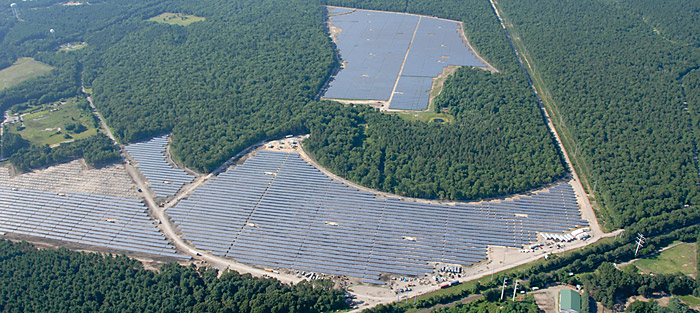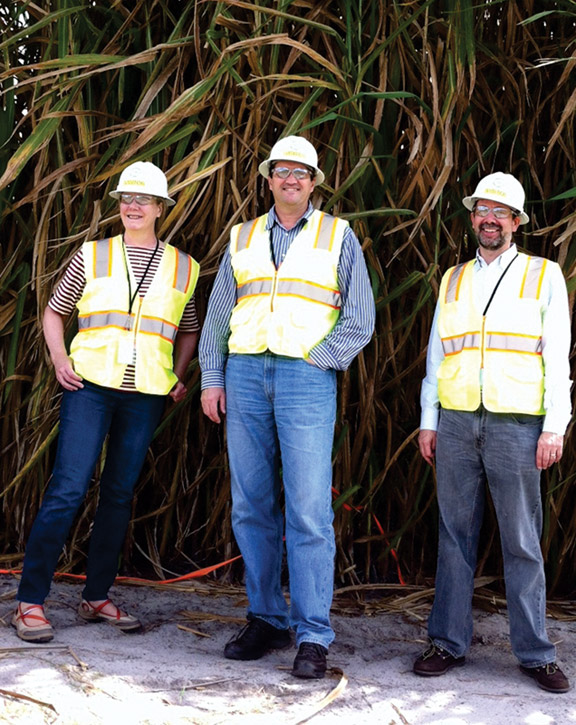Chief scientist Ellen Williams seeks to bring new energy to BP
DOI: 10.1063/PT.3.1392
Just three months into the job, BP chief scientist Ellen Williams watched the tragic events unfold following the April 2010 explosion of the Deepwater Horizon oil rig in the Gulf of Mexico. The accident killed 11 workers and triggered the largest-ever industrial oil spill; by September more than 500 million liters of crude oil had gushed from the damaged deep-water well owned by BP.
Williams says that in the months following the spill, she got increasingly frustrated as she tried to parse the news media’s “confusing and often contradictory” reports of the details of the accident and the attempts to plug the well. “It bothered me that if I couldn’t understand on a technical basis what was going on, then what about others?” So heeding her academic instincts, she rounded up experts in oil exploration and environmental sciences and asked them to put together a technical talk on deep-water drilling, which they would take to BP’s university research partners around the world. “We wanted to give them just the facts,” says Williams. “Not proselytizing. Just giving them the opportunity to decide for themselves what all this stuff meant.”
That’s the kind of approach that the London-based energy company expects from the chief scientist position. “I was hired by BP to advance the basic science that underpins their technologies and also to serve as a liaison to its university partners,” says Williams, who is on leave from her position as Distinguished University Professor at the University of Maryland in College Park.
A Caltech graduate with a PhD in chemistry, Williams has been honored by the National Academy of Sciences and other science organizations for her fundamental contributions to understanding the nanoscale dynamics of electronic materials. She says conversations with her BP predecessor, former Caltech theoretical physicist Steven Koonin, affirmed her decision to accept the chief scientist post. In addition to Caltech and BP, Koonin and Williams are also linked as members of JASON, an independent body of prominent US scientists who provide technical advice to the Pentagon and other federal agencies (see the interview
At BP, Williams has participated in the establishment of the $500 million Gulf of Mexico Research Initiative, which funds Gulf Coast universities to investigate the impact on the ecosystem of chemical dispersants used for oil-spill remediation. Though funded by BP, she says the initiative is “very independent” of the company.
Williams also administers R&D investments for BP, which touts the slogan, “Beyond Petroleum”—a signal of the company’s interest in alternative energy technologies. “Biofuels is our single biggest R&D expenditure right now,” she says, noting BP’s funding of the $500 million Energy Biosciences Institute, a consortium of researchers at BP, the University of Illinois at Urbana-Champaign, Lawrence Berkeley National Laboratory, and the University of California, Berkeley.
PHYSICS TODAY caught up with Williams in November, a few weeks after she spoke at the Industrial Physics Forum (IPF) on sustainable energy, sponsored by the American Institute of Physics.
PT: What prompted you to make the jump from academia to industry?
WILLIAMS: The big draw for me was the opportunity to get involved in a substantial way with energy issues—energy being a huge important problem for the future of the world—and with technology that could potentially address some of the energy problems.
PT: Almost two years into the job, what do you miss about academia?
WILLIAMS: I miss teaching. I miss having the time to really sit down and just go deep into a subject. Industry is really fast paced, and I have to struggle to grab any time to put a lot of attention into a problem.
PT: What kind of impact do you think you can make as an academic in an oil company?
WILLIAMS: My research is in condensed-matter physics and electronic materials, but a lot of people don’t know that my background in graduate school was in chemistry and catalysis and in surface chemistry. The other aspect of my background is that, as a member of the JASONs for close to 20 years, I’ve had the opportunity to look at a range of technology programs and to understand technology assessment and technology development. In industry, people have learned to push really hard to drive through programs to completion, so part of my job is to bring that academic perspective of really rigorous science, asking deep questions, and being very demanding of proposed hypotheses.
PT: At the beginning of your IPF talk you spent a few minutes on BP’s ongoing response to the Gulf Coast oil spill. As BP’s chief scientist, are you obligated to do that at every public appearance?
WILLIAMS: I think it’s really important to address the oil spill. I’ve been doing it in all my talks, and I’ve been watching the audience reaction. So far, I haven’t reached the point where I’ve had the feeling that the audience was bored with what I was saying. Once I reach that point where people say, “That’s old news, we don’t want to hear about that anymore,” I’ll stop doing it. But I get the feeling that people are still concerned and worried and want to know what really happened and where things stand.
PT: At the IPF, you said that the company is pulling out of the solar-panel manufacturing business. Why is that?
WILLIAMS: Yes. We used to have a big solar manufacturing capability in Frederick, Maryland, but Chinese manufacturing has driven the price of solar panels down more than 30%. In one sense, that’s a good thing for the world because it makes solar energy much more affordable. But it’s a bad thing for US manufacturing because we can no longer be competitive.
We still have a solar research farm at Brookhaven [National Laboratory] and at sites in a few other countries. The Brookhaven initiative is a solar farm where we’re manufacturing power, combined with a research activity trying to understand how to make solar energy sustainable.
PT: Is wind energy still a focus at BP
WILLIAMS: Wind is a good business for us. We’ve got a lot of wind farms up and a whole lot more under way. Wind is coming very close to being breakeven with more traditional forms of power generation, but you still have to deal with intermittency. So for us, R&D in wind energy has been focused on developing best practices of running the wind farms right at the cutting edge of efficiency.
PT: Why has BP decided to focus on biofuels?
WILLIAMS: BP made a decision to leap into biofuels as part of our commitment to a diversity of energy options. Of the potential types of alternative energy options, biofuels is well suited to an oil company because, of course, it’s a liquid fuel and matches a lot of the value chains and capabilities that we already have in place for petrochemicals and refining. So in a sense, it’s a natural fit.
We are aware of the pitfalls and environmental concerns—for example, deforestation and the conflict of food versus fuel. So the real leap we wanted to take was to move beyond the food component and make use of the entire plant. The cellulose and hemicellulose, the woody components, can be broken down into sugars using acid treatments. But the challenge is taking the mix of sugars and economically fermenting it into fuel. We’ve been working with traditional fermentation yeast, and the Energy Biosciences Institute has been doing great experimentation with new types of yeast that can be bred to address those specific types of sugar mixtures.
PT: BP is also an industrial partner on the carbon-capture and storage demonstration plant in In Salah, Algeria, a region rich in natural gas. What progress has been made with CCS technology?
WILLIAMS: There have been some promising results from In Salah. They’re working out the practical how-tos. Basically, CCS makes sense because the oil and gas industry already knows how to put CO2 underground. We’re just figuring out the best ways of keeping it there. A bigger challenge, though, is the declining support around the world for dealing with CO2 mitigation. That’s frustrating [because] BP is a business, and CCS would only bring value if we can make it commercially viable.
PT: You were involved in various science education outreach programs at the University of Maryland. Will you look to do the same at BP?
WILLIAMS: We sponsor an annual program called the Ultimate Field Trip, where we take university students and form teams to address one technical question, such as, “What can you use the platforms in the North Sea for once all the oil is gone?” The winning team this year got to intern on a BP oil and gas platform in the North Sea. Next year, [the internship] will be in the Gulf of Mexico and Trinidad.

BP’s 32-MW solar farm at Brookhaven National Laboratory began operating in November 2011.
BP


BP chief scientist Ellen Williams stands with her manager David Eyton (center) and her colleague Roger Humphreville in front of a crop of napier grass in Highlands County, Florida, where the company is building a commercial cellulosic biofuels production plant.
BP

